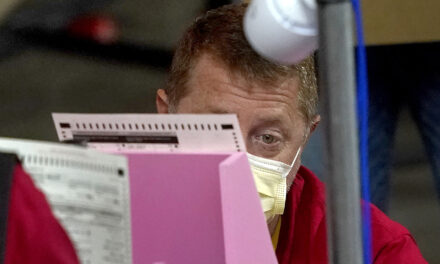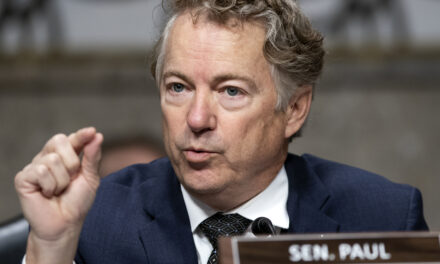
Cars and Clothes Spur Rise in Retail Sales: Live Updates

Consumer spending increased for a fifth straight month in September, though the recovery in the battered retail sector remains halting as Americans continued to struggle with high unemployment and waning confidence in the economy.
Retail sales rose 1.9 percent, the Commerce Department said on Friday.
Much of the spending last month, economists say, was likely driven by white-collar workers whose economic fortunes have remained relatively stable during the coronavirus pandemic, while consumers at the lower end struggled with high unemployment of 7.9 percent.
“We are still at one of the highest unemployment rates of any recession since 1948,” said Beth Ann Bovino, chief U.S. economist at S&P Global. “I don’t think we can celebrate.”
The early weeks of the pandemic were disastrous for retail sales, which dropped 8.3 percent in March and then fell 16.4 percent in April. Sales bounced back strongly in May and June, when stores reopened from lockdowns, but growth has since slowed. Sales rose 0.6 percent in August, after a 0.9 percent gain in July.
Weighing on consumer spending has been the failure of Congress and the Trump administration to extend additional financial assistance to jobless Americans, after the weekly $600 subsidy ended in July.
Even though stimulus money has dried up, consumers have benefited from a $13.6 trillion savings buffer that accumulated from April through August, economists for Morgan Stanley wrote in a note last week.
But spending could take a hit based on how the labor market recovers and as uncertainty lingers around the upcoming presidential election and the timeline of a vaccine.
Conditions for the upcoming holiday shopping season look increasingly dim, Ian Shepherdson, chief economist at Pantheon Macroeconomics, wrote in a research note on Wednesday.
“We’re becoming very nervous about Q4 and, especially, the holiday season, in the likely absence of new fiscal stimulus,” he wrote. “Household incomes are now falling, at the most important time of year for retailers.”

The 1.9 percent increase in retail sales in September was more than twice what most economists had predicted.
A few analysts said that the amount of the increase was proof that a broader economic recovery had taken hold, despite the high unemployment and business closures. Others say these gains may be fleeting.
It was the fifth straight month that retail sales had increased, and the spending patterns also show that even as virus cases grew across much of the country last month, people continued to venture out and spend more. Here are some highlights:
-
Strong auto sales were the largest factor in the spending increase. Low interest rates continued to encourage people to buy cars and trucks. Vehicle sales rose 3.6 percent from August, as more Americans who are forsaking air travel during the pandemic upgraded their cars or bought one for the first time. Gasoline sales also increased slightly, suggesting that more people were driving more as schools, offices and businesses reopened.
-
A roughly 11 percent increase in clothing and department stores sales was another driver of the overall spending rise. Some of that can be attributed to back-to-school spending, which typically happens early in the summer. Still, some economists were baffled by the strength in the department store business at a time when many Americans who are still employed are working remotely and have no need for new office attire.
-
Sales of health and beauty products, which seemed less necessary in the heart of the lockdowns this spring, increased 1.5 percent in September.
But some areas that were strong when pandemic-induced lockdowns forced Americans to remain in their homes showed signs of weakness.
Grocery sales surged at the start of the pandemic, causing panic among shoppers and record profits for food retailers. But things have normalized since then and sales at grocery stores were flat in September.
In a similar vein, electronic sales fell slightly, after recording big gains in the earlier months of the lockdowns when people were upgrading their home offices or buying new devices to entertain their stir-crazy children.
-
Financial markets in the United States and Europe rose on Friday, as investors considered a new round of earnings reports and a report on retail sales that was stronger than expected.
-
The S&P 500 rose less than half a percent in early trading. The gains in Europe were sharper, with the Stoxx Europe 600 up more than 1 percent, recovering from a sharp drop the day before.
-
On Wall Street, investors were considering a report from the Commerce Department that showed U.S. consumer spending increased for the fifth straight month in September. The 1.9 percent gain reported was stronger than economists had expected.
-
The British pound gyrated, sharply sinking 0.75 percent before quickly recovering, as Prime Minister Boris Johnson said his government would abandon Brexit talks and proceed without a trade deal on Jan. 1 unless there was a “fundamental change in approach” from the European Union side. Thursday had been Mr. Johnson’s deadline for striking a deal. E.U. negotiators are expected to come to London next week for more talks.
-
Shares in LVMH, the French luxury goods company which owns Louis Vuitton and Givenchy, jumped more than 6 percent after the company said sales in its fashion brands rebounded in the third quarter. Shares in Christian Dior, also controlled by LVMH, rose 8 percent. Shares in the British luxury brand Burberry climbed more than 3 percent.
-
Daimler, the German manufacturer of Mercedes-Benz, said its third-quarter performance had been better than expected with a pretax profit of 3.1 billion euros. The automaker’s shares rose 5 percent.
-
A European aviation regulator told Bloomberg News that he was satisfied with upgrades to the Boeing 737 Max, increasing the chances the plane could return to the region’s skies by the end of the year. Final approval in Europe requires several more steps, but Boeing’s shares rose nearly 5 percent.

The Coca-Cola Company is discontinuing Tab, its first diet soda brand that became a cultural icon in the 1980s and retains a small but loyal cult following to this day.
For years, rumors have circulated that the soda giant was planning to end the brand, which was introduced in 1963. The possibility of its demise had prompted Tab’s most devoted fans — who call themselves Tabaholics — to reach out to the company to complain and even sign petitions demanding that Coca-Cola keep Tab alive.
But this time, it’s really over: Tab is going away amid an effort by Coca-Cola to “retire select underperforming products” by the end of this year, the company announced on Friday.
Coca-Cola said that plans to streamline the company’s beverage brands were “underway well before the coronavirus outbreak,” but that supply chain disruptions and changing consumer behavior caused by the pandemic prompted the company to speed up its efforts.
Other outgoing products include Odwalla, Coca-Cola Life, Diet Coke Fiesty Cherry and Sprite Lymonade, as well as regional beverage brands such as Northern Neck Ginger Ale and Delaware Punch.
“It’s about continuing to follow the consumer and being very intentional in deciding which of our brands are most deserving of our investments and resources, and also taking the tough but important steps to identify those products that are losing relevance and therefore should exit the portfolio,” Cath Coetzer, global head of innovation and marketing operations for The Coca-Cola Company, said in a statement.
Tab was initially marketed to women with the message that the zero-calorie beverage would keep their waistlines trim.

The Business Roundtable, a group of chief executives of major U.S. companies, announced on Thursday initiatives meant to advance racial equity and justice and to reduce the “economic opportunity gap in communities of color.”
The group said it hoped to:
-
Give $1 billion to community lending institutions, which provide funds for Black households and small businesses, by 2025.
-
Give $600 million in financial contributions to provide Black- and Latino-led Minority Depository Institutions with capital and deposits, by 2025.
-
Set up a system to mentor and support Black and Latino small-business owners, with a goal of reaching 50,000 businesses over the next five years.
“The racial inequities that exist for many Black Americans and people of color are real and deeply rooted,” Doug McMillon, president and chief executive of Walmart and chairman of the Business Roundtable, said in a statement. “These longstanding systemic challenges have too often prevented access to the benefits of economic growth and mobility.”
PepsiCo, a member of the Business Roundtable, said on Wednesday that it was committing more than $170 million over five years to support initiatives to “empower Hispanic Americans.” The company said it would expand Hispanic managerial representation to 10 percent of the company’s work force by 2025 by hiring 120 Hispanic managers, including 50 executives.
There was one major talking point this week for executives on earnings calls and in media appearances: the stalled negotiations over another pandemic stimulus bill.
-
“The medium to longer term is still highly uncertain in particular as it relates to future stimulus. And so we remain heavily weighted to our downside scenarios.” — Jennifer Piepszak, the chief financial officer of JPMorgan Chase
-
“The pace of job growth and the rebound in consumer spending have slowed, and the diminished pace of reopening and the end of some stimulus programs are presenting headwinds.” — Charles Scharf, Wells Fargo’s chief executive
-
“There is talk of another stimulus in terms of its impact. We’ve assumed that kind of a bit later, in terms of in the first quarter of 2021.” — Mark Mason, the chief financial officer of Citigroup
-
“For both sides, I think what they need to keep in mind is that there are Americans that need them, that don’t really care about politics, aren’t really tied up in this election and they just need some help.” — Doug McMillon, Walmart’s chief executive, on CNBC
-
“The consumer number in my view is going to be highly dependent on whether they provide more fiscal stimulus, which I think they absolutely need to do.” — William Demchak, the chief executive of PNC Financial Services

Many companies do not expect their workers to return to offices until next summer, and even then things may never be the same as before, judging by the comments executives made this week, highlighted in today’s DealBook newsletter.
On earnings calls, executives from Goldman Sachs said that about a third of workers in New York and London were coming in regularly; at JPMorgan Chase, it’s around 20 percent in both cities; and Citigroup said “a small percentage” of employees in North America had returned.
“Being together enables greater collaboration, which is key to our culture,” said David M. Solomon, Goldman’s chief. But Jamie Dimon of JPMorgan acknowledged that some working habits may have changed permanently, which “will ultimately reduce the space you need for your employees.” Terrance R. Dolan, the finance chief at U.S. Bancorp, told analysts that the bank will most likely “consolidate” its corporate real estate to reflect “the new horizon.”
Is that a problem? Steven J. Goulart, the chief investment officer at MetLife, said at a regulatory round table that the “pressure to de-densify” offices to support social distancing could support demand for real estate even if buildings aren’t as full as before.
And as executives conduct more business remotely, going back to in-person meetings and pitches seems less urgent. Natarajan Chandrasekaran, the chairman of Indian conglomerate Tata Sons, said in an interview with The New York Times that he used to fly from India to the United States to pitch a $50,000 project. But recently, he said, his firm’s consultancy business closed $2 billion worth of deals in “five or six Zoom calls.”
There are other perks from working at home. BlackRock’s Laurence D. Fink is excited about what employees could do with the time they save on daily commutes. “They could spend two hours improving their health by exercising,” he said on a conference call. “They could spend two hours more in building a deeper, stronger, more resilient family.”
Paul Draovitch of Duke Energy said at an investor event that working from home was “not without risks,” but also brought certain benefits: “When my Pomeranians walk into the room, it’s really a pleasure.”
Ephrat Livni contributed reporting
-
U.S. industrial production declined in September by 0.6 percent, the Federal Reserve reported, another indicator of a faltering recovery. After surging in June and July, industrial output barely rose in August. Production of consumer goods fell 1.6 percent in September, including a decline of more than 4 percent in automotive output. Over all, manufacturing decreased by 0.3 percent and was 6.4 percent below the February level.
-
A British regulator said on Friday it had fined British Airways 20 million pounds, or $25.9 million, for lax security that led to a data breach in 2018, in which hackers stole data of more than 400,000 British Airways customers. The fine is much less than the £183 million originally suggested in 2019.

Every airline is struggling, but each struggles in its own way.
United Airlines relies far more than its rivals on international travel, which is expected to take far longer than domestic travel to bounce back. So the airline is fine-tuning its business, from maintenance to flight planning, as it tries to predict where a wary public will fly, reports Niraj Chokshi.
“We can really throw away the crystal ball, which was hazy to begin with,” said Ankit Gupta, United’s vice president for domestic network planning.
When the virus devastated travel in March and April, United took hundreds of planes out of circulation. Since July, it has brought back more than 150, including those flown by regional carriers, but about 450 are still stashed away.
To understand when and how demand might recover, United is tracking indicators like national travel restrictions, the travel habits of dual citizens and the economic ties between countries. “It’s a bit of gut feeling, to be quite candid,” said Patrick Quayle, who oversees the airline’s international network planning.
Most of the people still flying are staying within the country, visiting friends and relatives or vacationing outdoors. So the airline is gauging how many flights to add to snowy destinations, while adding winter service to Florida from the Northeast and the Midwest. It also plans to expand service on dozens of routes to tropical destinations near and within the United States.
Whatever happens in the months to come, said Tom Doxey, United’s senior vice president for technical operations, “we have a plan in place.”

Facebook and Twitter limited or blocked the distribution of an unsubstantiated New York Post article about Hunter Biden, the son of the Democratic presidential nominee, Joseph R. Biden Jr.
Twitter has since changed the policy that it had used to block the article, saying on Thursday that it would allow similar content to be shared. But both companies drew a furious response and accusations of censorship from Republican lawmakers, including President Trump.
The New York Times’s tech reporters and columnists have been covering the developments as they unfold:
-
Twitter and Facebook’s actions offer a glimpse at how online conversations could go awry on Election Day. And Twitter’s bob-and-weave in particular underlined how the companies have little handle on how to consistently enforce what they will allow on their sites, Mike Isaac and Kate Conger write.
-
To many Democrats, the unsubstantiated article — which included a bizarre set of details involving a Delaware computer repair shop, the F.B.I. and Rudy Giuliani, the president’s personal lawyer — smelled suspiciously like the result of a hack-and-leak operation, The New York Times’s technology columnist Kevin Roose says.
-
YouTube has managed to avoid the controversy entirely, because it isn’t clear what — if anything — that platform is doing about the story, reports Daisuke Wakabayashi.

The Federal Reserve, which set up a variety of programs to keep credit flowing in the midst of the pandemic recession, should stop making corporate bond purchases, the congressional commission tasked with overseeing the central bank’s emergency lending efforts said in a new report.
The program, which is backed with money from the Treasury Department, was set up to buy corporate bonds — first through exchange-traded funds and more recently as part of an index that it created. Through Oct. 8, the facility had bought $13.1 billion in funds and individual bonds, the report said.
The program has drawn criticism for making it easier for a broad array of companies to borrow money at very low rates, although doing so has helped many raise funds needed to weather the pandemic. Most of the benefit to corporations has come indirectly — as a result of the Fed’s presence as a backstop, not because of the purchases themselves — but critics have also said that the programs should have more strings attached.
Actual purchases in the program had already slowed to a trickle thanks to calm market conditions, but the commission said it “has concluded that the facility should stop making any purchases.”
The oversight committee, a group of two Democrats and two Republicans, also reported the results of a hearing on the Fed’s effort to buy state and local debt — a program that has seen limited use because of its relatively high interest rates and what borrowers call ungenerous terms.
The Republicans on the committee felt that the program had “achieved its purpose of restoring liquidity in the municipal bond market.”
But the Democrats felt that it should be more generous. They argued that it should reduce the interest rate charged so that the municipal program was “at least as generous with state and local governments as it is with borrowers participating in its other emergency lending programs.”


















